Gallery: Floating Fungus Enters Polluted Creek
Fungus Float on Newtown Creek

Contamination in Newtown Creek, which divides Brooklyn and Queens in New York City, has earned it listing as a Superfund site. A community group is exploring the possibility of using fungi to break down toxins in the water. The float the canoe is towing above is made of burlap and straw colonized by the oyster mushroom fungus before being put into the water.
The Skyline over Newtown Creek
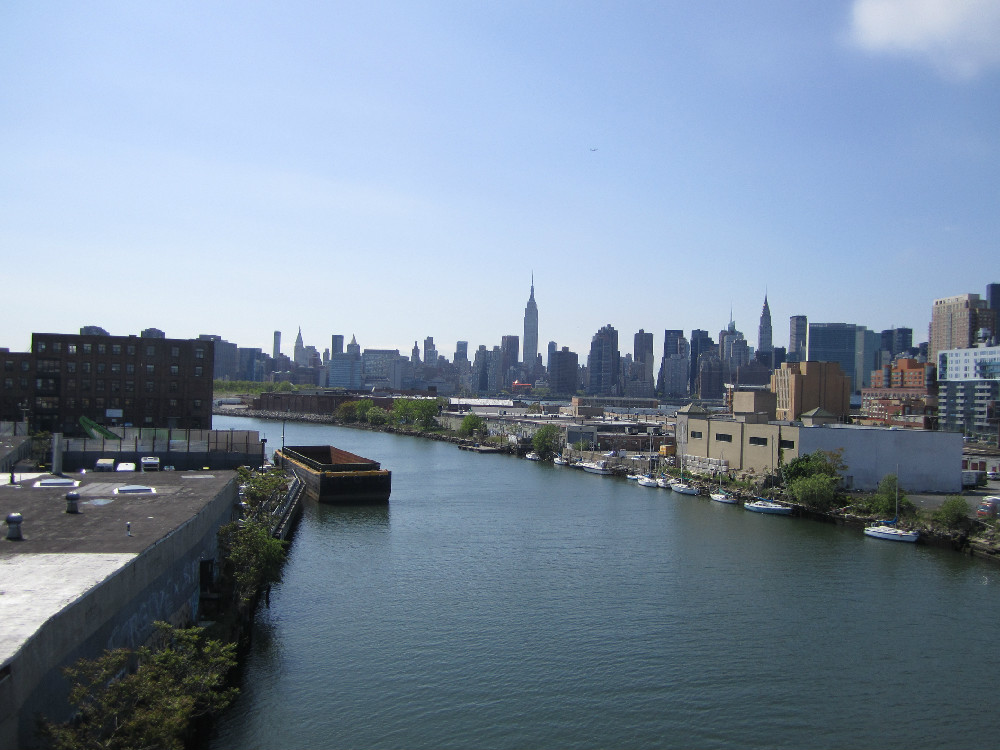
Newtown Creek, which opens into New York City's East River, accumulated toxic waste during its time as an industrial hub. An underground oil spill nearby seeps into the water, and when heavy rains flood New York City's sewer system, raw sewage pours into the water. The EPA listed it as a Superfund site in 2010.
Oyster Mushroom Mycelium
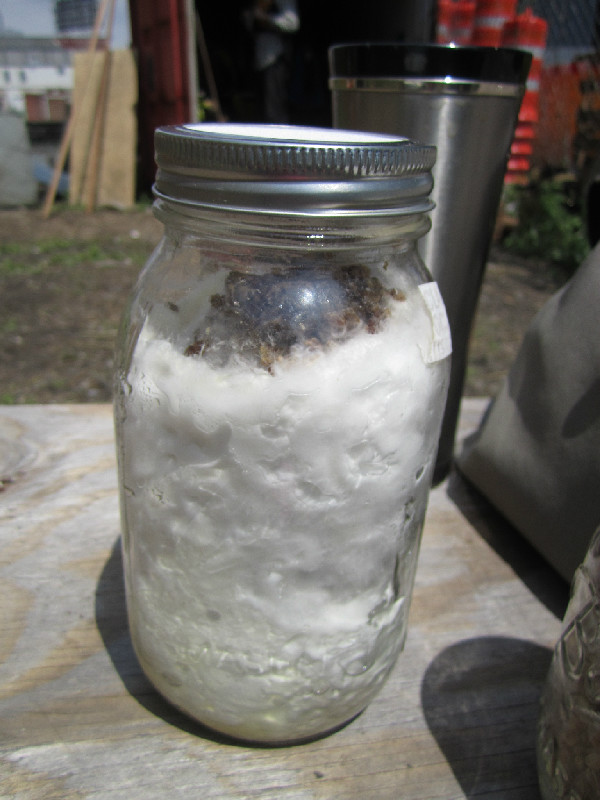
A network of fine fungal fibers of a fungus, called mycelium, have filled a jar of rye berries. In nature, mycelia secret enzymes that can break down recalcitrant molecules in wood, similar to those in petrochemicals. Members of the Newtown Creek Alliance bioremediation group are testing out their ability to reliably grow the oyster mushroom fungus, which has been shown to break down contaminants, outside the lab.
Oyster Mushrooms
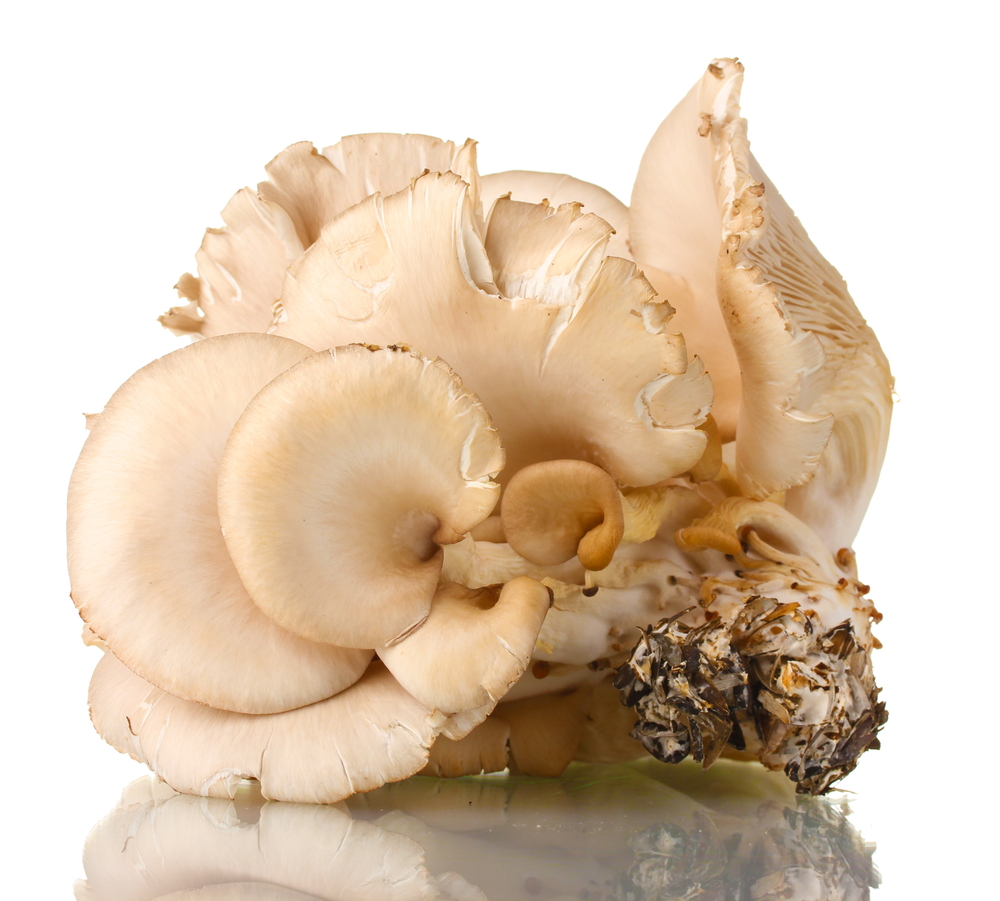
The most recognizable parts of the oyster mushroom fungus are its mushrooms, which are fruiting bodies that produce spores.
Fungal Growth
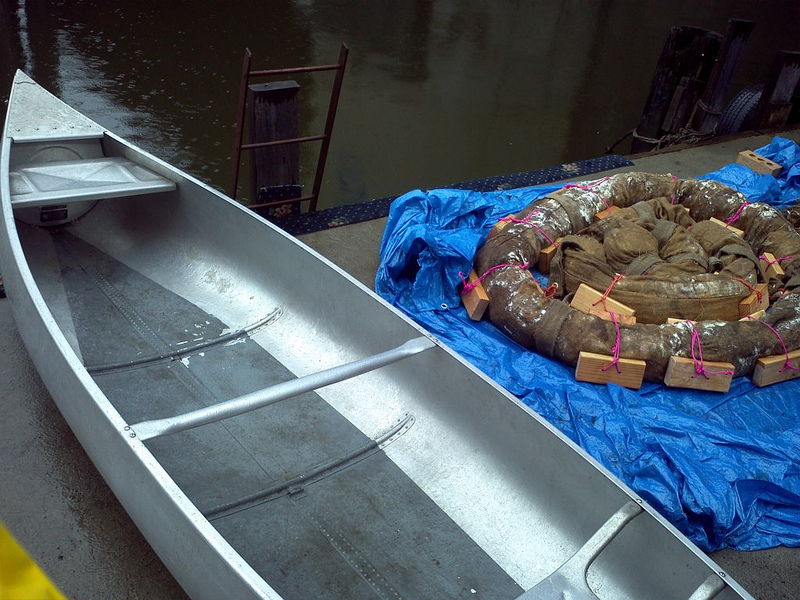
Fungus that had grown in the rye berries was mixed in with hay and put in burlap tubes to make the float, shown above on the right. White fungal growth appeared after the mycelium colonized the float. The fungus did not appear to fare well after being put into the water, but the primary goal was to successfully grow the fungus in the hay and burlap on land, outdoors, according to the group.
A Fairy Ring
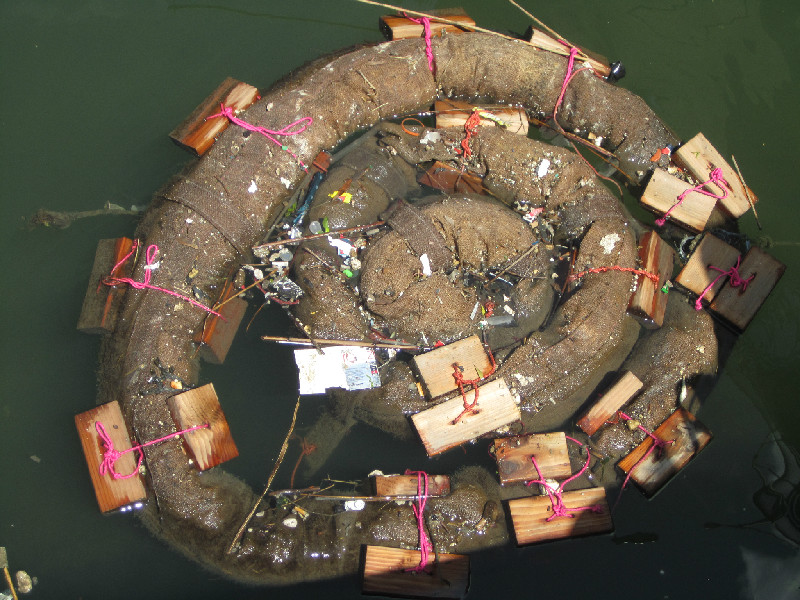
The first float on the Newtown Creek was designed in concentric circles to a mimic fairy ring, the pattern some fungi create in the ground. This design proved controversial; the mycologist who came up with the original method for using floating fungi to break down contaminants, Paul Stamets, objected to it, saying the circular design would be much less effective than the long, sausagelike floats he created.
Upstream
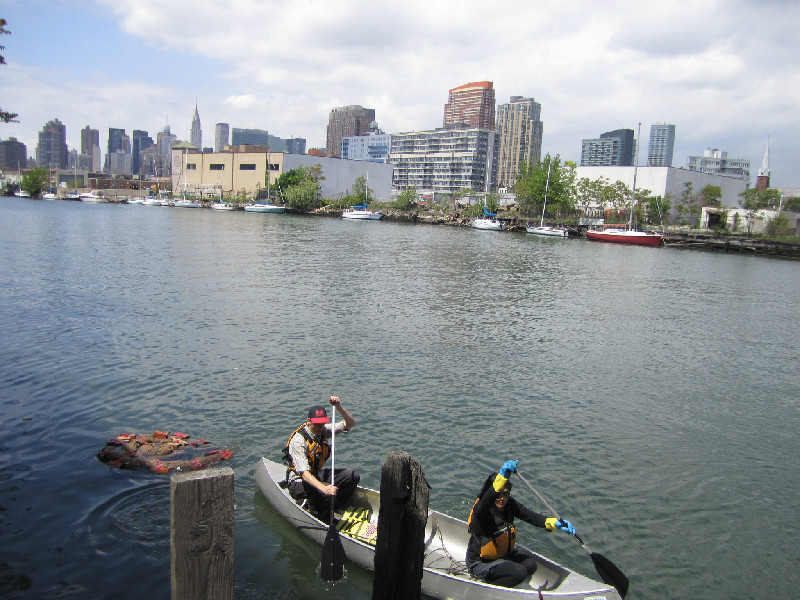
Paddlers towed the float from its resting place beside the North Brooklyn Boat Club to a site upstream where community members were waiting. Fungi may help with cleanup and restoration at the Superfund site, but it's not yet clear how effective this concept will be here or quite how the fungi should be used.
Get the world’s most fascinating discoveries delivered straight to your inbox.



